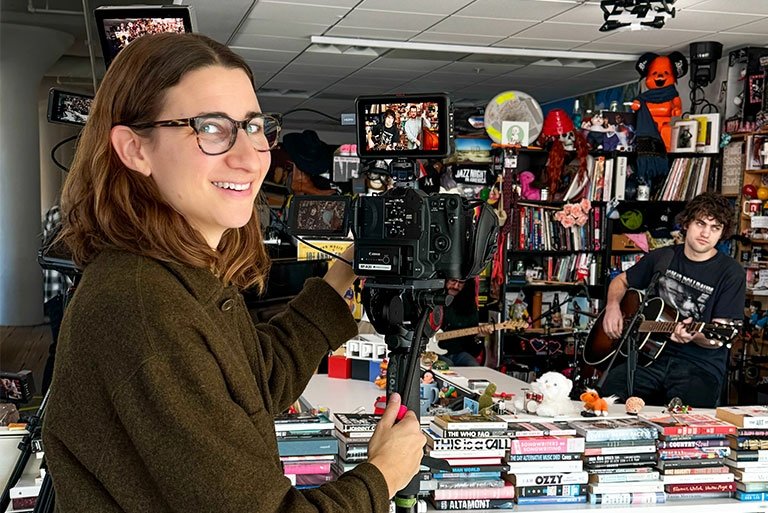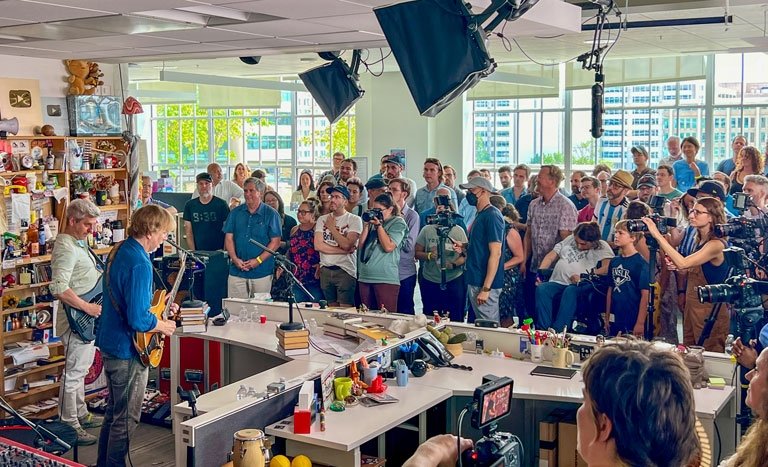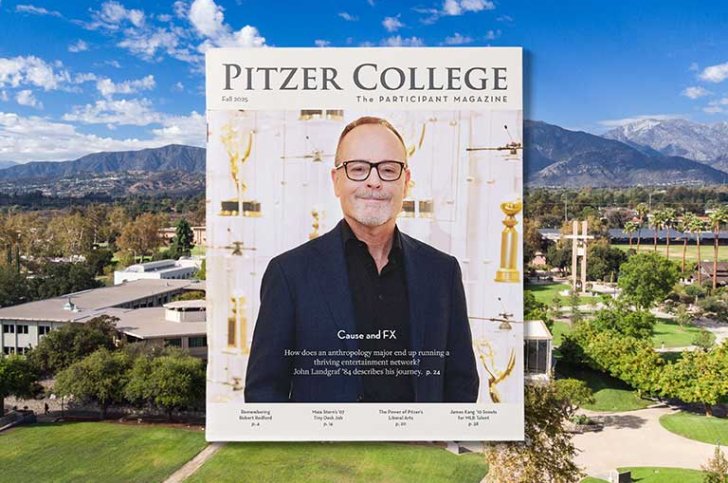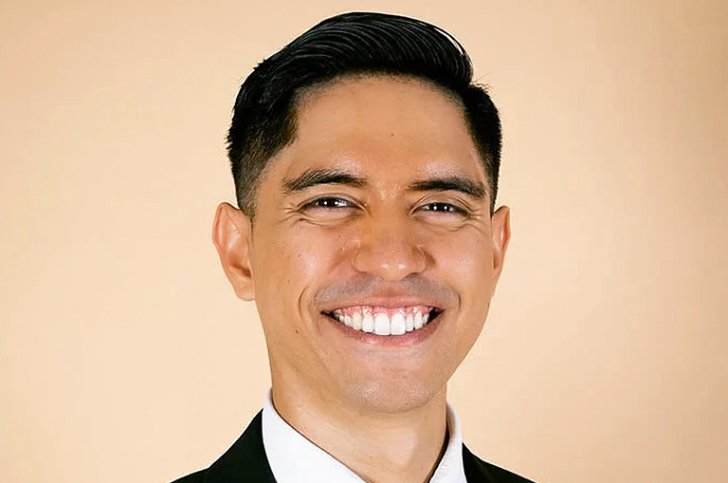Behind the Camera of NPR’s Tiny Desk Concerts
Video producer Maia Stern ’07 shares how she developed her media studies major at Pitzer into a career of filming music in quirky settings.

Not many can say that Radiohead’s Thom Yorke playing live on the piano is their work soundtrack. As the lead video producer of National Public Radio’s Tiny Desk Concerts, Maia Stern ’07 can. In addition to Yorke, Stern has filmed music artists from many different genres, ranging from American rapper Post Malone to Argentine power duo CA7RIEL and Paco Amoroso.
“The Tiny Desk to me is the great equalizer,” said Stern. “All artists are performing on the same platform, the same brightly lit office space. I love seeing how artists interpret the space. Some of the biggest names get nervous. Some of the smallest names get the loudest applause.”
The Tiny Desk team—which consists of Stern and her small production team—publishes three concerts per week. Artists play in the open office for a small crowd of mostly NPR employees. Stern films the performances so that even YouTube viewers can feel like they are part of the audience.
“During a Tiny Desk performance, my goal is to capture all the instruments you hear in the room,” said Stern. “We also have to show faces. We show a guitar player’s face and hands playing the guitar. It’s important to me to capture the emotion.”

Tiny Desk’s backdrop is a colorful bric-a-brac of books, posters, figurines, bottles, vinyl records, toys, and more. Stern said that many of these are items that artists leave on the shelves as mementos, and the Easter eggs are always changing.
Stern enjoys experiencing new genres and musicians while also meeting the artists behind her childhood albums. Listening to Yorke rehearse before his new band, The Smile, played on Tiny Desk was one of her most surreal experiences.
“No one experiences music that way, in a room with your favorite artist six feet away from you,” said Stern.
Stern didn’t know that such an experience lay ahead when she started filming as a child. She made her first movie at seven years old when she filmed her father shaving his beard, and she has carried around a camera ever since. Majoring in media studies at Pitzer was her first opportunity to do video projects in a more formal context.
“I owe a lot to Pitzer for having that major as an option,” said Stern. “I couldn’t believe that this was school. This was the most fun, personal thing to me.”
Stern learned how to create videos through an artistic and documentative lens (largely relying on the latter in her career). She described fond memories while at Pitzer of “going to the dark little edit caves and ingesting MiniDV’s,” a tangible difference from today’s all-digital era. From documenting her study abroad in Canada to filming snakes eating mice in a Claremont pet shop, Stern experimented with whatever she found interesting.
She continued that philosophy after she graduated. Her first job was street marketing in Los Angeles, which involved handing out stickers and other promotional items for bands. Then she realized she could have more impact by showcasing these bands’ performances. She started producing videos, and the music marketing company she was working for hired her as a full-time video producer in New York.
Stern recorded interviews with artists, filmed live music, beauty how-to's, and artist and fashion week first for The FADER and later as a freelancer. She kept her eye on any company that appealed to her interests and used networking to find new opportunities.
“Freelance for me meant I could do whatever I wanted,” said Stern. “I’d dream where I could see myself, where I would be excited to work.”
Stern continued to work in video production in New York for brands and sites including New York Magazine, Elle Magazine, Refinery29, and Sesame Street. Eventually, she was able to find a connection with a video producer at NPR.
Stern started at NPR producing live news videos and later produced a series about foragers and an interview show with mostly female scientists. She enjoyed this work, but she was eager to return to her roots in music and become involved with Tiny Desk Concerts.
“I’d filmed a lot of bands in bathrooms, in living rooms in front of a fireplace, and backyards,” said Stern. “I thought it was so quirky to hear music in a different setting.”
As she helped more with Tiny Desk, she eventually rose through the ranks to work full time as the lead video producer. Throughout her career, she has maintained a fly-on-the-wall approach to let her subject (in this case, the music) speak for itself. Stern feels grateful for the community she has built at Tiny Desk.
“We’re all one big family when artists arrive,” said Stern. “An artist comes in and gets to know all of us. Then they sign their tchotchke and put it on the shelves. I’ve had a lot of fun with it.”
News Information
Published
Author
Bridgette Ramirez
Organization
- Communications


